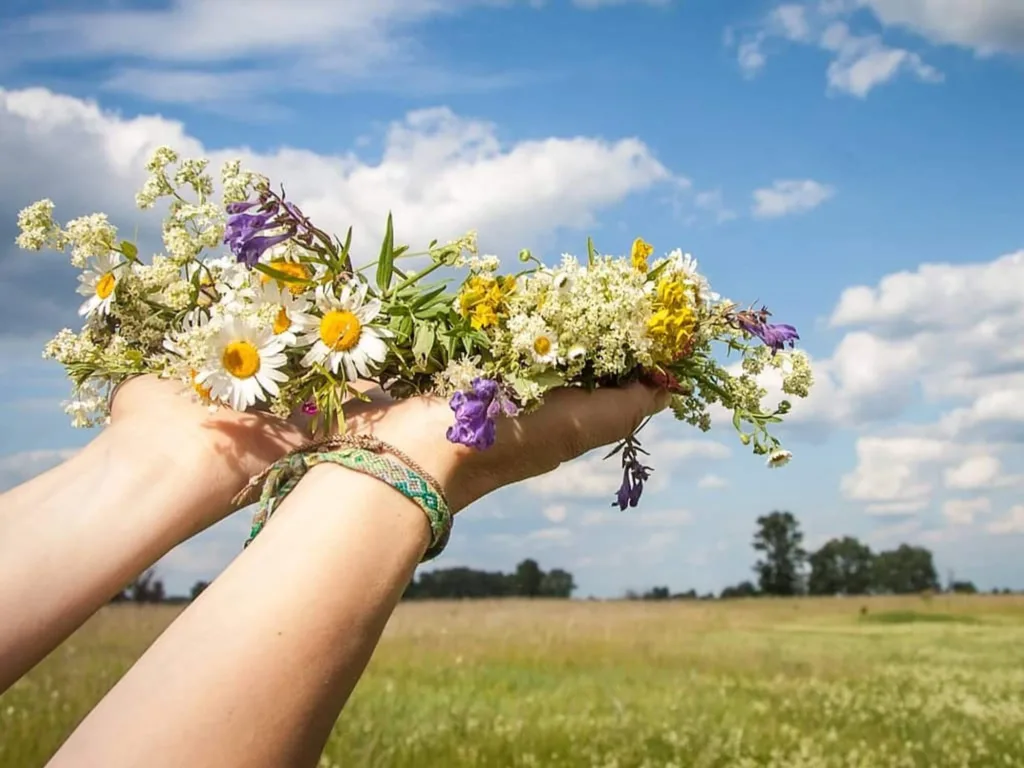News
The Ultimate Guide to Caring for Fresh Flowers at Home
Part 1: Understanding Your Flowers
Flowers have an unparalleled ability to brighten spaces, lift moods, and communicate emotions. From a simple bouquet of daisies to an elaborate arrangement of exotic orchids, fresh flowers bring life, color, and a sense of connection to the natural world. However, the beauty of flowers is fleeting, and without proper care, their vibrancy and life can diminish rapidly. Understanding the basics of flower care is essential for anyone who wants to enjoy blooms for as long as possible, whether as a casual enthusiast, a home decorator, or a passionate florist.
Why Proper Flower Care Matters
Caring for flowers is more than just an aesthetic concern. Fresh flowers are living organisms, and like any living thing, they have needs. Water, light, temperature, and nutrients all play crucial roles in keeping flowers healthy and vibrant. Proper care ensures that flowers not only look beautiful but also maintain their structural integrity and fragrance. A bouquet that is well-cared-for can last days or even weeks longer, providing prolonged enjoyment and value.
Neglecting these needs, on the other hand, accelerates wilting, browning, and decay. Understanding the science behind flower longevity allows you to make informed decisions when handling, arranging, and maintaining blooms. This knowledge transforms floral care from a simple task into an art form, where each stem, petal, and leaf is appreciated and nurtured.
Different Types of Flowers and Their Unique Needs
Not all flowers are created equal. Each species has distinct characteristics that affect how it should be cared for. For example, roses, lilies, tulips, and orchids each have specific requirements for water, sunlight, and temperature.
Roses: Roses are delicate and highly responsive to their environment. They require fresh water daily, and their stems should be trimmed at an angle to improve water absorption. Roses thrive in cool indoor environments away from direct sunlight.
Lilies: Lilies are hardy flowers but can be sensitive to ethylene gas, which accelerates wilting. Keeping lilies away from ripening fruits or vegetables can extend their life. Removing pollen from stamens also prevents staining and preserves petal integrity.
Tulips: Tulips continue to grow even after being cut, so they need tall containers and adequate water. They respond well to cooler temperatures and should not be placed in direct sunlight for prolonged periods.
Orchids: Orchids are exotic flowers with unique root systems that require indirect light and careful hydration. Unlike other flowers, orchids benefit from misting to maintain humidity around their roots.
Understanding the specific needs of each flower type is essential for proper care. Flower care is not a one-size-fits-all approach; it requires knowledge, observation, and adaptation to the unique characteristics of each bloom.
Understanding Flower Anatomy
A deeper appreciation of flower anatomy can enhance care techniques. Flowers consist of several key components, each playing a role in their health and longevity:
Stems: Stems act as conduits for water and nutrients. Cutting stems at an angle increases surface area, improving water uptake. Removing leaves that sit below the waterline prevents bacterial growth that can clog stems.
Leaves: Leaves are involved in photosynthesis, but excessive foliage in water can accelerate decay. Trimming leaves ensures that energy is directed toward the blooms rather than unnecessary foliage.
Petals: Petals are the visible expression of the flower, responsible for color, fragrance, and aesthetic appeal. Proper hydration and temperature control preserve petal integrity.
Roots: While most cut flowers are no longer rooted, understanding root health is important for potted plants and stems with remnants of roots. Healthy roots absorb water efficiently, supporting overall flower vitality.
By understanding how each part functions, you can optimize care practices, from cutting stems to arranging blooms, ensuring that each flower reaches its full potential.
Seasonality and Climate Effects
Flowers are sensitive to their environment, and seasonal changes can dramatically affect their longevity. Spring flowers, such as tulips and daffodils, thrive in cool conditions, while summer blooms like sunflowers and dahlias prefer warmer temperatures. Autumn flowers, including chrysanthemums and marigolds, are adapted to mild climates, and winter blooms like amaryllis and poinsettias thrive in cooler indoor environments.
Climate also affects how flowers should be handled indoors. In humid climates, preventing fungal growth on petals and leaves is critical, whereas in dry climates, maintaining moisture through misting or humidity trays is necessary. Recognizing how seasonality and climate influence flower needs allows for better care planning, ensuring blooms remain fresh and vibrant regardless of external conditions.
Common Challenges in Flower Care
Even with proper knowledge, flower care presents challenges that must be addressed proactively:
Bacterial Growth: Bacteria in water can clog stems, preventing water absorption and accelerating decay. Regularly changing water and cleaning containers can mitigate this problem.
Ethylene Exposure: Fruits and vegetables emit ethylene gas, which accelerates wilting in sensitive flowers. Keeping flowers away from these sources is crucial.
Temperature Extremes: Flowers are sensitive to both heat and cold. Direct sunlight, heaters, or air conditioners can stress blooms. Maintaining a stable, cool environment promotes longevity.
Wilting and Petal Drop: Proper hydration, trimming, and careful handling reduce stress on petals and stems, minimizing premature wilting.
Understanding these challenges allows for preventative care, ensuring that flowers remain in optimal condition for as long as possible.
Conclusion of Part 1
Understanding your flowers is the cornerstone of effective flower care. By recognizing the specific needs of different flower types, appreciating flower anatomy, and considering seasonality and climate effects, you can create an environment that supports longevity and beauty. Proper care is both a science and an art, combining observation, knowledge, and thoughtful handling to ensure that every bouquet and bloom reaches its full potential.
Part 2 will delve into essential techniques for flower care, including preparation, hydration, temperature control, and daily maintenance to keep flowers fresh and vibrant at home.

Part 2: Essential Techniques for Flower Care
Caring for fresh flowers at home is both a science and an art. Once you understand the unique needs of different blooms, the next step is mastering essential techniques to ensure they remain vibrant, healthy, and long-lasting. Proper preparation, hydration, and daily maintenance can transform a bouquet from a fleeting decoration into a lasting centerpiece that brightens your home for days or even weeks.
1. Preparing Flowers Before Arranging
Before placing flowers in a vase or container, preparation is crucial. Proper handling ensures maximum water absorption and minimizes stress that can lead to premature wilting.
Trimming Stems: Always cut stems at a 45-degree angle under running water. This angle increases the surface area for water uptake, allowing flowers to absorb more effectively. Using sharp, clean scissors or floral shears prevents crushing or damaging the stem. For woody-stemmed flowers like roses or lilies, a diagonal cut ensures a smooth water path.
Removing Excess Foliage: Leaves that sit below the waterline can rot and introduce bacteria into the vase. Carefully strip leaves that would otherwise be submerged, leaving only those above the water for aesthetic purposes.
Hydration: Immediately after cutting, place stems in lukewarm water. Many flowers respond better to lukewarm rather than cold water, as it stimulates absorption. Allowing flowers to hydrate for several hours before arranging ensures they are fully revitalized.
Softening Stems: Some flowers, such as tulips, continue growing after being cut. Placing these blooms in water with a small pinch of sugar or floral preservative can encourage natural growth and maintain structural integrity.
2. Choosing the Right Water, Containers, and Preservatives
The quality of water and the choice of container play a critical role in flower longevity.
Water Quality: Fresh, clean water is essential. Tap water is usually sufficient, but filtered water can reduce impurities that may accelerate decay. Avoid hard water with excessive minerals, which can clog stems.
Containers: The vase or container should be clean and appropriately sized for the bouquet. Tall vases support long-stemmed flowers, while shorter vases suit compact arrangements. Wide-mouthed vases allow more air circulation, preventing stagnation that can promote bacterial growth.
Floral Preservatives: Commercial floral preservatives provide nutrients and inhibit bacteria, extending flower life. DIY alternatives, such as a mixture of sugar, lemon juice, and a few drops of bleach, can nourish blooms and prevent bacterial proliferation. Using preservatives in water helps maintain turgor pressure in stems, keeping petals firm and vibrant.
Water Temperature: Most flowers thrive in lukewarm water. Cold water slows absorption, while hot water can stress the stems. Lukewarm water encourages uptake without shock.
3. Temperature, Light, and Humidity Considerations
Environmental conditions significantly influence flower longevity.
Temperature: Flowers last longer in cool environments, ideally between 65–72°F (18–22°C). Avoid placing bouquets near heat sources, direct sunlight, or drafts, which accelerate wilting and dehydration.
Light: While flowers benefit from indirect natural light, direct sunlight can scorch petals and fade colors. Soft, diffused light allows flowers to maintain color and structure.
Humidity: Low humidity environments can cause flowers to dry out rapidly. For indoor spaces with dry air, occasional misting or placing flowers near a humidity source can help maintain freshness.
Airflow: Gentle airflow is beneficial, but strong drafts from fans or vents can damage petals and dehydrate stems. Balance airflow to prevent stagnation without causing physical stress to the blooms.
4. Daily Maintenance Techniques
Consistent, attentive maintenance is key to prolonging flower life.
Changing Water: Replace vase water every 24–48 hours to prevent bacterial buildup. Clean the vase thoroughly during each change to eliminate residual bacteria.
Trimming Stems: Re-trim stems every couple of days to reopen water channels and enhance hydration. Remove any discolored or wilting leaves and petals promptly.
Monitoring Blooms: Check daily for signs of wilting, discoloration, or fungal growth. Early intervention, such as removing damaged blooms or adjusting water and light, can prevent the problem from spreading.
Rehydrating: For flowers that appear droopy, submerge the entire stem in lukewarm water for 30–60 minutes to revive turgor pressure. This can often restore firmness to limp blooms.
Nutritional Support: Adding fresh floral preservatives during water changes provides essential nutrients that prolong petal integrity and bloom vibrancy.
5. Extending the Life of Specific Flowers
Different flowers require specialized care techniques to maximize longevity:
Roses: Remove thorns and lower leaves, trim stems diagonally, and keep in cool environments away from fruits. Deadhead spent blooms to encourage remaining flowers to thrive.
Lilies: Remove pollen early to prevent staining and maintain bloom integrity. Ensure flowers are in fresh water with floral preservatives.
Tulips: Tulips continue to grow after cutting. Place in tall containers and rotate occasionally to maintain balance and prevent bending. Cooler temperatures extend freshness.
Orchids: Orchids prefer indirect light and high humidity. Misting leaves and roots helps maintain hydration. Avoid submerging roots entirely; instead, allow gentle water absorption.
Sunflowers: These robust blooms benefit from plenty of water and slightly cooler temperatures. Keep stems straight and avoid crowding to prevent bruising petals.
6. Preventing Common Problems
Awareness of common issues allows preemptive action:
Bacterial Contamination: Prevent by cleaning vases and trimming stems. Floral preservatives inhibit bacterial growth.
Ethylene Exposure: Keep flowers away from ripening fruits and vegetables, which emit ethylene gas that accelerates aging.
Wilting or Browning: Address immediately by adjusting water, trimming stems, and removing affected petals. Quick intervention often restores vitality.
Petal Damage: Handle blooms gently. Avoid crowded arrangements that may cause friction or bruising.
Conclusion of Part 2
Mastering essential techniques for flower care transforms the simple act of arranging blooms into a rewarding, artistic, and scientific process. By preparing flowers properly, choosing the right water and containers, maintaining optimal environmental conditions, and performing daily upkeep, you ensure that your flowers remain fresh, vibrant, and visually stunning for as long as possible.
Part 3 will explore creative strategies to keep flowers fresh and vibrant longer, including DIY solutions, arrangement techniques, seasonal care, and repurposing blooms to maximize their longevity and aesthetic impact.

Part 3: Creative Strategies to Keep Flowers Fresh and Vibrant Longer
While understanding flower care basics and mastering essential techniques are critical, going a step further with creative strategies can make your blooms last even longer. From DIY solutions to innovative arrangement ideas, these strategies help you maximize freshness, extend bloom life, and enjoy every flower to its fullest.
1. Home Remedies and DIY Solutions
For many flower enthusiasts, simple household ingredients can significantly prolong flower life.
Sugar and Lemon Water: Adding a teaspoon of sugar and a few drops of lemon juice to vase water provides energy and maintains pH balance, keeping blooms firm. Sugar nourishes petals while acid helps prevent bacterial growth.
Apple Cider Vinegar: Mixing two tablespoons of apple cider vinegar with two tablespoons of sugar in a liter of water creates a natural preservative solution. The vinegar inhibits bacterial growth, while sugar supplies essential nutrients.
Aspirin or Bleach: Dissolving a crushed aspirin or a few drops of bleach in water can slow bacterial activity. Aspirin works by lowering pH, and bleach directly kills bacteria, keeping stems clear.
Copper Penny Trick: Placing a copper coin in the vase has been observed to inhibit algae formation, keeping water clean and clear.
While commercial floral preservatives are highly effective, these DIY solutions are economical, accessible, and surprisingly efficient when applied consistently.
2. Designing Arrangements for Longevity
The way flowers are arranged affects their survival. Thoughtful arrangement can reduce stress on stems and petals while maximizing air circulation and water absorption.
Avoid Overcrowding: Crowded bouquets restrict airflow and increase contact between petals, promoting mold and premature wilting. Spacing flowers slightly apart ensures each bloom receives adequate oxygen and prevents damage.
Stem Support: Use floral foam or plant stakes to support delicate flowers, particularly lilies, tulips, or exotic blooms. This minimizes bending and breakage, keeping arrangements upright and attractive.
Layering by Water Needs: Combine flowers with similar hydration requirements in the same vase. Placing thirstier blooms with those that require less water can create stress, shortening overall bouquet life.
Rotate Blooms: For tall or uneven flowers, gently rotate the vase daily to balance sunlight exposure and prevent leaning or bending. This ensures uniform hydration and maintains visual harmony.
By considering structural and biological needs during arrangement, you extend the life of each flower while creating visually stunning compositions.
3. Seasonal Care Tips
Flowers react differently depending on the season, and minor adjustments can significantly improve their longevity.
Hot Weather: In summer, flowers wilt faster due to higher temperatures and increased evaporation. Place bouquets away from direct sunlight, air vents, and electronics that emit heat. Frequent water changes and cooler water temperatures help maintain hydration.
Cold Weather: In winter, indoor heating can dry air, dehydrating flowers. Increase humidity with gentle misting, use lukewarm water, and keep arrangements away from heaters and drafts.
High Humidity: Excessive humidity encourages mold and bacterial growth. Ensure proper air circulation around arrangements and avoid overcrowding blooms.
Seasonal Varieties: Select blooms suited for the season to naturally maximize longevity. Seasonal flowers are adapted to current temperature and humidity conditions, requiring less intervention for preservation.
4. Using Flowers Beyond Bouquets
Creative reuse of flowers can extend their value and beauty, even after they begin to fade.
Potting and Replanting: Some flowers, like roses, lilies, and orchids, can be carefully transplanted into pots or garden beds, allowing blooms or new shoots to continue thriving.
Pressing and Drying: Pressing flowers in books or drying them in low-humidity areas preserves their color and shape, creating lasting keepsakes for art, scrapbooks, or framed displays.
Decorative Projects: Wilted petals can be repurposed into homemade potpourri, scented candles, or floral confetti for events. Even short-lived blooms can inspire DIY crafts, extending their aesthetic impact.
Repurposing flowers not only reduces waste but also provides an opportunity to enjoy their beauty in creative, long-lasting ways.

5. Celebrating Flowers with Mindful Practices
Enjoying flowers fully is about more than maintaining their physical appearance. Mindful observation, interaction, and intentional care enhance both the emotional and aesthetic value of blooms.
Routine Observation: Take a few moments each day to examine petals, stems, and leaves. Early detection of wilting or discoloration allows prompt corrective action.
Emotional Connection: Engaging with flowers fosters a deeper appreciation of their beauty and fragility. Talking to plants, arranging them carefully, and tending to their needs can create a meditative, rewarding experience.
Learning from Experience: Each bouquet provides insights into care techniques, optimal placement, and arrangement styles. By reflecting on what works best, you refine your skills and develop personalized strategies for future blooms.
6. Advanced Tips and Subtle Considerations
For those who wish to truly master flower longevity, attention to subtle factors can make a notable difference.
Water Level Monitoring: Ensure that water levels remain consistent. Flowers can absorb a lot more water than expected, and low water can cause stems to collapse or petals to droop. Checking twice daily in hot weather is often necessary.
Clean Tools and Hands: When handling flowers, always use clean scissors or shears. Oils, dirt, or bacteria on your hands or tools can introduce contaminants that reduce bloom lifespan.
Avoid Overhandling: While arranging flowers, gentle and minimal handling preserves petal integrity. Excessive touching or repositioning can bruise delicate petals.
Separate Ethylene-Sensitive Blooms: Some flowers are extremely sensitive to ethylene gas from ripening fruits. Keeping highly sensitive flowers like lilies, carnations, or tulips separate from other household produce can dramatically extend freshness.
Observe Bloom Patterns: Flowers open at different rates. Monitor which blooms are fully open versus buds, and trim or reposition as needed to maintain visual balance and airflow.
By integrating these advanced practices with the foundational techniques, flowers remain vibrant, healthy, and visually stunning for longer, allowing you to enjoy their beauty fully.
Conclusion of Part 3
Creative strategies for flower care enhance longevity, preserve aesthetic appeal, and transform floral arrangements into lasting sources of joy. From simple home remedies to thoughtful arrangements, seasonal adjustments, and innovative reuse, every approach contributes to maximizing the life and beauty of fresh flowers.
Flowers are living art, and with attention, knowledge, and creativity, they can continue to brighten your environment far beyond their initial bloom. Caring for them thoughtfully ensures that each arrangement remains vibrant, meaningful, and memorable, offering endless opportunities to celebrate nature’s beauty.
By embracing both science and artistry, you transform the act of floral care into a rewarding, enriching experience that nurtures both the flowers and your connection to them. Every petal, stem, and leaf becomes a testament to careful attention, creativity, and the simple joy of bringing nature into your home.

